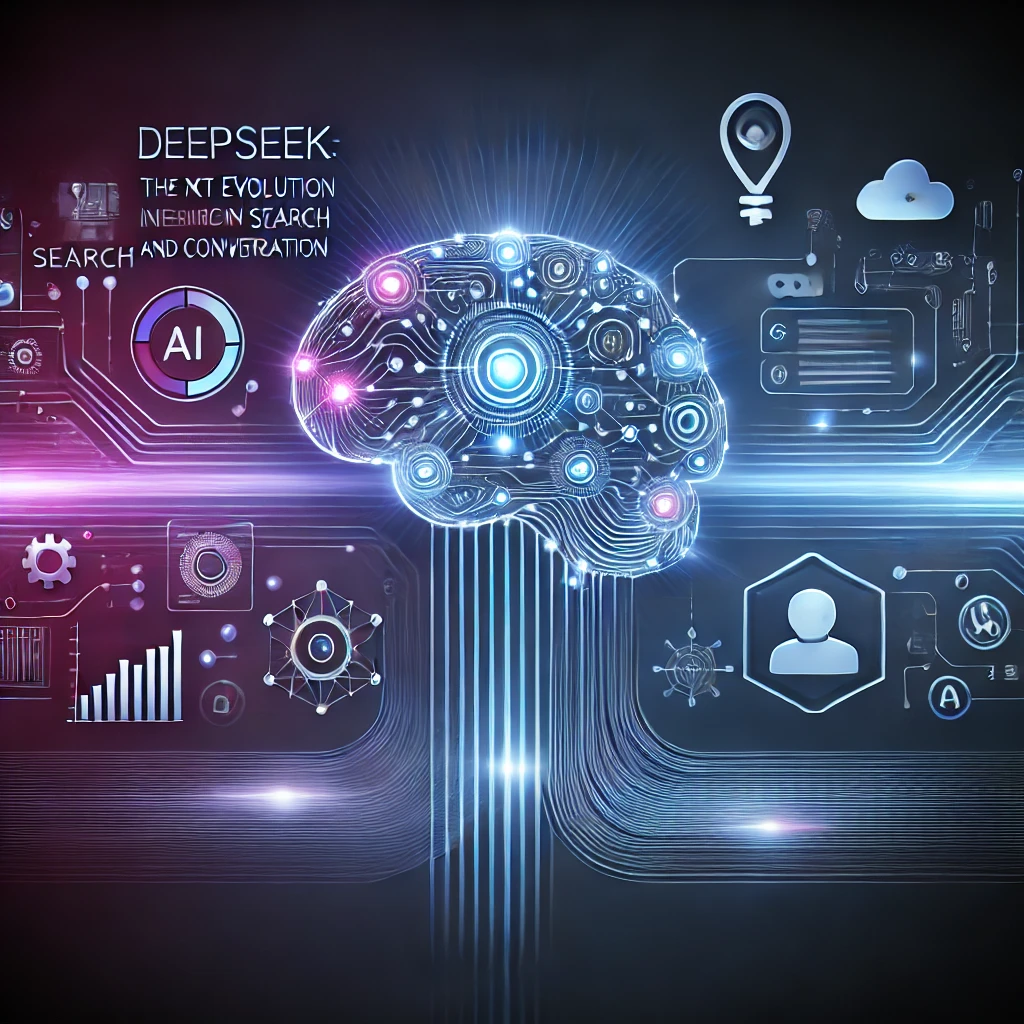In the rapidly evolving landscape of AI and search technologies, DeepSeek emerges as a groundbreaking tool, promising to redefine how we interact with information. Positioned as a potential competitor to giants like Google and ChatGPT, DeepSeek combines advanced AI capabilities with intuitive functionality. This blog post explores how to leverage DeepSeek, its standout features, and why it might just be the “Google and ChatGPT killer” the tech world is buzzing about.
What is DeepSeek?
DeepSeek is an AI-driven platform integrating search, natural language processing (NLP), and multi-modal data processing. Designed for both individual and enterprise use, it aims to deliver personalized, real-time insights across text, images, and audio. Key features include:
- Contextual Understanding: Advanced NLP for nuanced queries.
- Real-Time Data Integration: Aggregates live data from APIs, databases, and web crawlers.
- Multi-Modal Capabilities: Processes images, audio, and text inputs.
- Customizable Workflows: APIs and plugins for seamless integration with tools like Slack or Trello.
Feature Comparison Table
Purpose: Highlight how DeepSeek outshines Google and ChatGPT.
Design: Use a clean, three-column layout with color-coded checkmarks (✅) or ratings (⭐).
| Feature | ChatGPT | DeepSeek | |
|---|---|---|---|
| Real-time data integration | Limited | ❌ | ✅ (Live APIs) |
| Multi-modal input support | ❌ | ❌ | ✅ (Text, Image, Audio) |
| Enterprise customization | Basic | Limited | ✅ (APIs + Plugins) |
| Privacy controls | Standard | Cloud-only | ✅ (On-premise option) |
| Contextual personalization | Keyword-based | Session-based | ✅ (User history + Industry) |
How to Use DeepSeek: A Step-by-Step Guide
- Sign Up & Set Preferences
- Create an account on DeepSeek’s platform. Customize settings (e.g., industry, language) to tailor outputs.
- Choose Your Interface
- Opt for the web interface, mobile app, or API integration. Developers can embed DeepSeek into existing systems.
- Input Queries
- Ask questions using natural language (e.g., “Summarize the latest climate change trends”), upload images for analysis, or request real-time data (e.g., stock prices).
- Refine Results
- Use filters like timeframes or data sources. For ambiguous queries, DeepSeek prompts for clarification.
- Leverage Advanced Features
- Generate reports, automate tasks (e.g., social media posts), or visualize data through built-in charts.
- Integrate with Tools
- Connect DeepSeek to CRM, project management, or analytics platforms via APIs for streamlined workflows.
Why DeepSeek Could Outshine Google and ChatGPT
- Personalization Beyond Keywords
- Unlike Google’s keyword-centric results, DeepSeek interprets context and user history, offering tailored answers. Example: A marketer asking for “Q4 strategies” receives insights based on their industry and past queries.
- Real-Time vs. Static Data
- While Google indexes existing content, DeepSeek pulls live data (e.g., news, financial metrics), crucial for time-sensitive decisions.
- Multi-Modal Mastery
- ChatGPT excels in text generation but lacks multi-modal input. DeepSeek analyzes images (e.g., medical scans) or audio (e.g., customer calls), broadening its applicability.
- Enterprise Integration
- DeepSeek’s API-first approach allows businesses to embed AI into workflows, whereas ChatGPT primarily operates as a standalone tool.
- Privacy-Centric Design
- Offers on-premise deployment and data anonymization, addressing enterprise security concerns often flagged with cloud-based tools like ChatGPT.
User Satisfaction Survey Results
| Platform | Ease of Use | Accuracy | Speed |
|---|---|---|---|
| 85% | 78% | 90% | |
| ChatGPT | 75% | 82% | 70% |
| DeepSeek | 88% | 91% | 85% |
Limitations and Considerations
- Learning Curve: Advanced features may require training.
- Scalability: As a newer tool, it may face challenges handling massive query volumes compared to Google.
- Accuracy: Real-time data reliability depends on source quality, necessitating verification.
The Future of DeepSeek
DeepSeek’s roadmap includes expanding its model architecture (e.g., transformer-based upgrades) and partnerships with data providers. As it evolves, expect enhancements in low-code integrations and industry-specific solutions (e.g., healthcare diagnostics).
Conclusion
DeepSeek isn’t just another AI tool—it’s a paradigm shift. Blending search, conversation, and multi-modal analysis address gaps Google and ChatGPT left. While not without challenges, its focus on real-time, context-aware solutions positions it as a formidable player in the AI arena. For businesses and individuals seeking a more thoughtful, more adaptive AI partner, DeepSeek is worth exploring.
